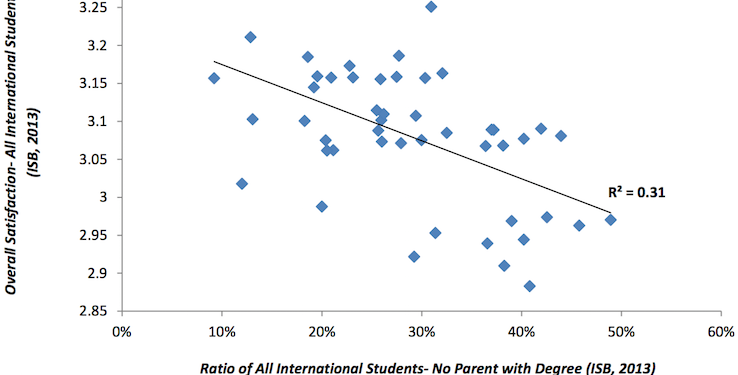As increased access to foreign study changes the demographics and backgrounds of the typical mobile student, higher education institutions are struggling to meet the evolving needs of international students, according to analysis from benchmarking company i-graduate.
News and business analysis for Professionals in International Education
Have some pie!
Demographics influence student satisfaction says i-graduate

For the first time the company has taken a macro look at data from its International Student Barometer (ISB)– the world’s largest survey of foreign student satisfaction– to give a large-scale, cross institutional, cross country analysis of what makes international students feel they have received a valuable study experience.
The insights drawn also confirm what many in the sector already suspected: rankings do not reflect satisfaction; a high number of Chinese students impacts overall integration; and the ratio of foreign to domestic students affects the academic environment.
“We still think of international students as somewhat elite and the best of the best and there’s certainly a portion where that’s still true but international students are more and more like the ordinary student”
Increased buying power among the world’s middle classes means many international students are first generation higher education students and certainly the first to study overseas. However, there is a negative correlation between student satisfaction and parental degree history.
“If one accepts that degree-level education is a decent proxy for familiarity with higher education and above average income, the data suggests that international students without at least one parent educated to degree-level are more likely to be culturally, academically and financially disadvantaged, which may lead to a less rounded and more problem beset experience, and lower satisfaction,” the study states.
“Such students, and their parents, may be more prone to less-informed choice of institution or more susceptible to suspect recruitment practices.”
The report’s author and director of i-graduate North America, Richard Garett, argued that as recruitment practices increase globally the findings are a call to action for educators to cater to the growing diversity among foreign students.
“We still think of international students as somewhat elite and the best of the best and there’s certainly a portion where that’s still true but international students are more and more like the ordinary student,” he told The PIE News.
“Ultimately everything is working ok but there’s a lot of nuances and scope for improvement around thinking of what it means to serve students at this kind of scale.”
The report also confirms that students are less satisfied with their ability to make friends with other foreign students as diversity among nationalities shrinks and underlines the dangers of overreliance on China as a source market.
“Institutions need to take the time to diversify their recruitment strategies because otherwise there’s this temptation to stick with your own and it counters the integration with other internationals and domestic students as well,” said Garrett. “The Chinese correlation ratio strongly suggests that schools can exacerbate that problem.”
“Schools should think about what’s a truly international experience as opposed to one that’s predominately US, Chinese and then not much else,” he added.
Among undergraduates, there is little relation between university rankings and overall satisfaction. In fact, universities that fall in the mid-range of rankings, between 101 and 300, boast higher satisfaction ratings.
“Schools should think about what’s a truly international experience as opposed to one that’s predominately US, Chinese and then not much else”
“Universities ranked in the top 100 may enjoy brand strength such that experiential enhancement is less urgent, and universities ranked outside the top 300 may be in a situation where experiential enhancements are undermined by more fundamental limits on infrastructure,” the report reasons.
The analysis draws on responses from a subset of the 2013’s ISB that surveyed some two million students at hundreds of institutions worldwide. The data represents 50 universities from in Australia, the UK and the USA which generated over 60,000 student responses.
“There is no question that greater international student numbers can enhance the experience for all students, as well as the bottom line; but in a high-growth environment, without careful planning, “internationalisation” can backfire, undermining the academic experience and social integration,” the analysis warns.
“Institutions that fail to heed these lessons risk a negative spiral of low satisfaction, weak referrals and ambivalent word-of-mouth, driving up recruitment costs and tarnishing brand.”
Still looking? Find by category:



7 Responses to Demographics influence student satisfaction says i-graduate